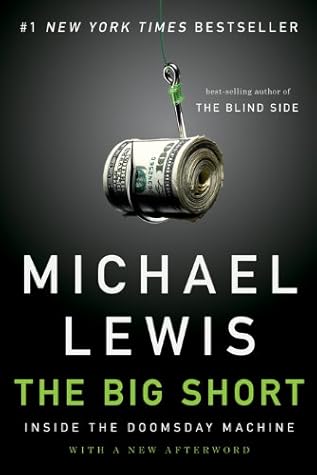More on this book
Community
Kindle Notes & Highlights
Read between
October 28 - November 13, 2020
How do you make poor people feel wealthy when wages are stagnant? You give them cheap loans.
“When you’re a conservative Republican, you never think people are making money by ripping other people off,” he said. His mind was now fully open to the possibility. “I now realized there was an entire industry, called consumer finance, that basically existed to rip people off.”
The CDO was, in effect, a credit laundering service for the residents of Lower Middle Class America. For Wall Street it was a machine that turned lead into gold.
Why didn’t someone, anyone, inside Goldman Sachs stand up and say, “This is obscene. The rating agencies, the ultimate pricers of all these subprime mortgage loans, clearly do not understand the risk, and their idiocy is creating a recipe for catastrophe”?
Here’s another thing I don’t understand, said Vinny. How could you rate any portion of a bond made up exclusively of subprime mortgages triple-A? That’s a very good question. Bingo.
The soy sauce in which Eisman double-dipped his edamame was shared by a man who had made it possible for tens of thousands of actual human beings to be handed money they could never afford to repay.
it wasn’t hard to spot the Bear Stearns CDO salesmen. They came dressed in khakis and polo shirts and were surrounded by burly men in tight black t-shirts who appeared to be taking the day off from hunting illegal immigrants with the local militia.
He entered private meetings with the lenders and the bankers and the rating agencies probing for an intelligence he had yet to detect.
“There were more morons than crooks, but the crooks were higher up.”
Subprime borrowers tended to be one broken refrigerator away from default.
Digging deeper, he called S&P and asked what happened to default rates if real estate prices fell. The man at S&P couldn’t say: Their model for home prices had no ability to accept a negative number.
Complicated financial stuff was being dreamed up for the sole purpose of lending money to people who could never repay it.
By May 2007, however, there was a growing dispute between Howie Hubler and Morgan Stanley. Amazingly, it had nothing to do with the wisdom of owning $16 billion in complex securities whose value ultimately turned on the ability of a Las Vegas stripper with five investment properties, or a Mexican strawberry picker with a single $750,000 home, to make rapidly rising interest payments.
Only the ardor of the Wall Street firms, desperate to buy fire insurance on their burning home, remained undimmed.
Whenever Wall Street people tried to argue—as they often did—that the subprime lending problem was caused by the mendacity and financial irresponsibility of ordinary Americans, he’d say, “What—the entire American population woke up one morning and said, ‘Yeah, I’m going to lie on my loan application’? Yeah, people lied. They lied because they were told to lie.”
Every major firm on Wall Street was either bankrupt or fatally intertwined with a bankrupt system. The problem wasn’t that Lehman Brothers had been allowed to fail. The problem was that Lehman Brothers had been allowed to succeed.
The main effect of turning a partnership into a corporation was to transfer the financial risk to the shareholders. “When things go wrong it’s their problem,” he said—and obviously not theirs alone. When the Wall Street investment bank screwed up badly enough, its risks became the problem of the United States government.


